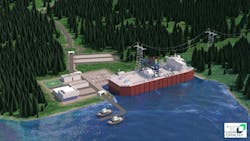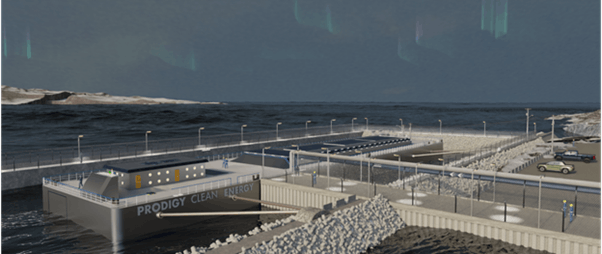OTC 2025: Nuclear microreactors can transform offshore energy industry
By Matthew Palmer, Lloyd’s Register
As the offshore energy sector intensifies efforts to reduce emissions, nuclear technology is re-emerging as a viable and innovative solution. While traditional nuclear plants may seem incompatible with the compact, mobile and often remote nature of offshore infrastructure, microreactors could offer a compelling alternative.
The challenges of powering offshore oil and gas infrastructure are well known. Many assets operate in isolated regions, relying heavily on diesel or gas turbine generators, both high emitters of CO2. With mounting regulatory pressure and investor focus on decarbonization, operators are exploring alternative technologies that can meet both energy demand and environmental expectations.
Microreactors provide emissions-free power
Heat pipe microreactors are increasingly seen as one such solution.
Typically producing between 5 MW and 10 MW of power, these small-scale reactors are compact enough to fit within a standard shipping container. They utilize uranium as fuel to generate heat through controlled nuclear fission, and unlike traditional pressurized water reactors, microreactors use passive heat pipe technology, eliminating the need for complex coolant and pumping systems. This design not only improves safety but also reduces the risk of catastrophic failure, as seen in legacy incidents like Fukushima and Chernobyl.
The operational benefits for offshore assets are considerable. Microreactors can provide continuous, emissions-free power for several years without refueling. For assets requiring additional capacity, multiple units can be deployed in tandem. This scalability provides unprecedented flexibility for offshore installations. They can be integrated into small to mid-sized platforms or deployed on mobile barges for smaller applications. These floating power stations can be strategically positioned near offshore installations or brought into ports to support high-demand facilities like data centers and activities such as green hydrogen production.
This mobility provides a significant advantage over traditional power infrastructure. As energy demands shift across regions or as offshore assets move between locations, these power barges can be repositioned accordingly, ensuring continuous clean energy provision without permanent installation requirements.
With fuel supplies designed to last several years before requiring replacement, much like a battery, assets can remain on station for extended periods without the logistical complexities of regular refueling operations that plague conventional power systems.
Partnerships invest in nuclear technology
Lloyd’s Register (LR) is working closely with Canadian firm Prodigy Clean Energy on the development of floating nuclear power barges. These barges, which house microreactors in secure, transportable platforms, are designed to deliver clean energy to ports, platforms or remote facilities.
With investment support from the government of Canada, the project reflects growing institutional confidence in the technology. Such endorsements suggest that microreactors could have a role to play in the offshore industry as well as in addressing broader regional energy challenges.
One of the major hurdles to nuclear deployment has always been the regulatory process.
LR has partnered with Microsoft to introduce artificial intelligence (AI) tools into the licensing workflow for low-power nuclear systems. By using generative AI to manage and analyze licensing documentation, this technology is designed to significantly reduce the time and complexity traditionally associated with nuclear licensing without compromising safety.
The development of what effectively amounts to a "nuclear type approval scheme" could revolutionize how microreactors are certified and deployed. Similar to how gas turbines are currently integrated into classed assets, pre-approved reactor designs could be readily incorporated into offshore installations with minimal regulatory friction.
Conclusion
The offshore sector has long been a proving ground for technological innovation and is ready to serve as an early adopter of transformative technology that could reshape the global energy landscape. With microreactors offering clean, reliable power in compact, mobile packages, the future of offshore energy looks increasingly bright and decidedly nuclear.
Lloyd’s Register, an Offshore Technology Conference (OTC) sponsor, will be present at the Energy Evolution Exchange lounge (EE2077) this week.
About the Author

Matthew Palmer
Matthew Palmer is segment director of Global Nuclear and Naval Submarines with Lloyd's Register (LR), and he leads the company's assurance activities for floating nuclear in the marine and offshore sectors.
He joined LR in 2012 after his previous role in the Royal Navy as a marine engineering officer on Trafalgar Class submarines and is a chartered engineer holding a degree in mechanical engineering and a PGDip in nuclear reactor technology.
Palmer previously worked on developing goal-based standards, rules and assurance products, and he played a key role in the development on LR’s Unmanned Marine Systems Code. He also leads several projects on how goal-based standards could be applied for commercial floating nuclear.

